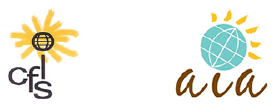Dr. Brian Kennedy, Buck Institute for Research on Aging
August 24, 2014 (Sun) 3:00 – 5:00 p.m.
UNM Continuing Education Auditorium
Followed by AIA member opening reception with speaker
In the past five decades, individual life expectancy has increased by 15 years in almost every country in the world. Technology and preventive care have significantly improved global public health, but the resulting demographic shift brings new challenges. In parts of Asia and Western Europe, a rapidly graying population weighs heavily on the minds of policy makers. Healthcare reform is still a heated debate in the US, and the private sector is struggling to find skilled replacements for a retiring workforce. How are the public experts, scientists and business leaders approaching an aging society? Come to AIA lecture to learn about the emerging trends of aging populations around the world.
Brian K. Kennedy has an international reputation for his work in the basic biology of aging. He became the Buck Institute’s second CEO in July, 2010, coming from the University of Washington in Seattle where he served as Associate Professor in the Department of Biochemistry. He is well known for work during his graduate studies with Leonard Guarente PhD, which led to the discovery that Sirtuins (SIR2) modulate aging. His current work involves nutrient signaling pathways linked to dietary restriction, particularly the TOR pathway. He also studies A-type nuclear lamins, which are targets for mutation in Hutchinson-Gilford progeria syndrome. He has served on the National Institutes of Health Cellular Mechanisms of Aging and Development study section since 2006, and on the grant review committee for American Federation for Aging Research Grants since 2006. He has published more than 60 manuscripts in prestigious journals including Cell, Nature, Science, and the Proceedings of the National Academy of Sciences. He has been an Associate Editor for the Journal of Gerontology since 2006, and also serves as a consultant for biotech and pharmaceutical companies.
Supported by New Mexico Humanities Council and Sandia National Labs
